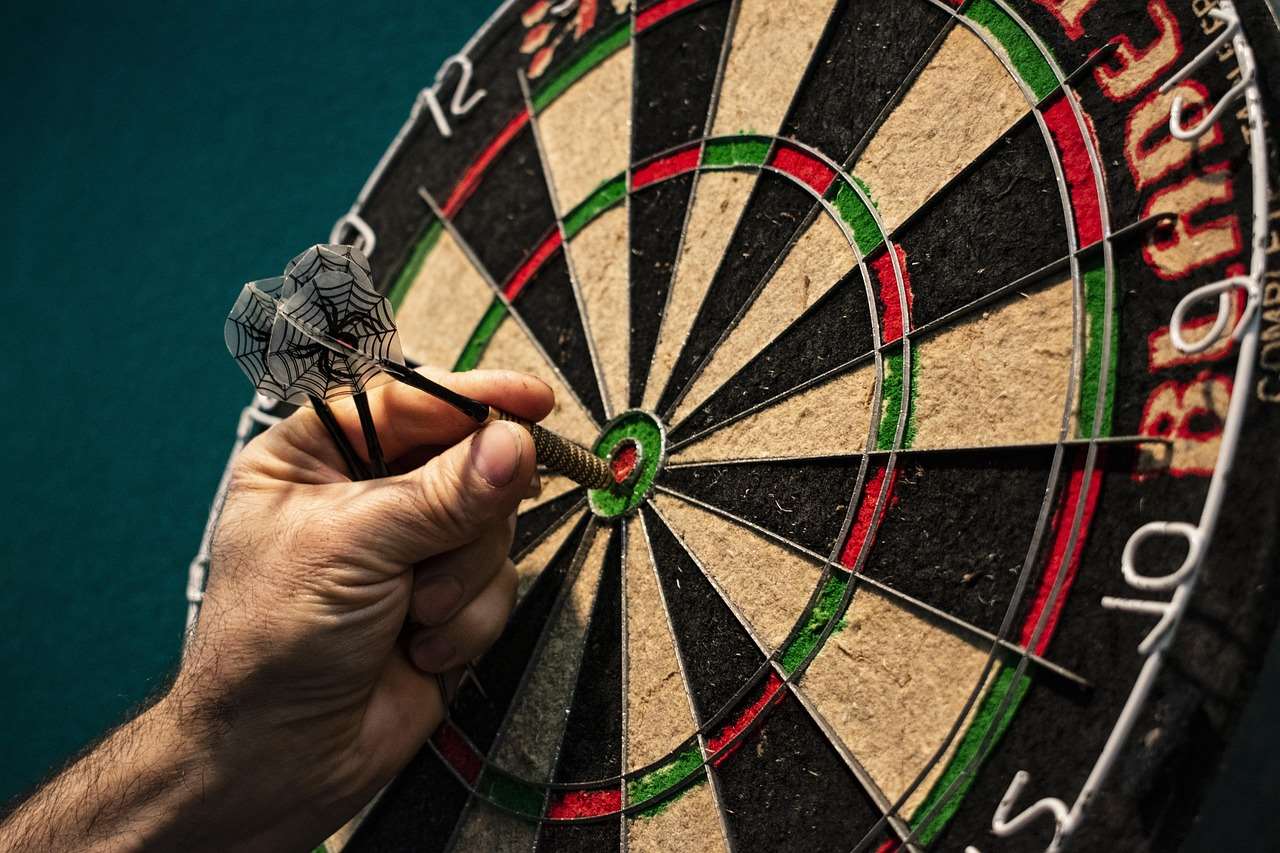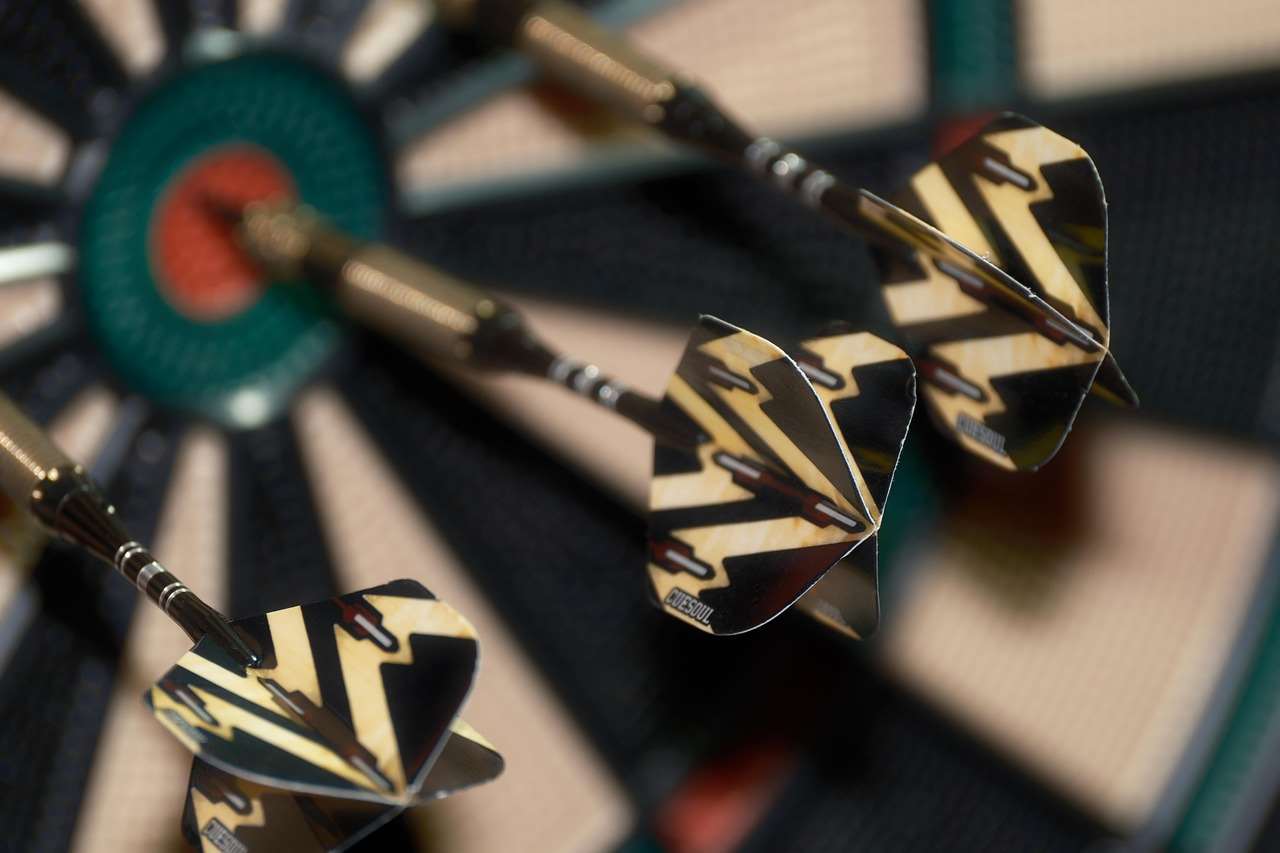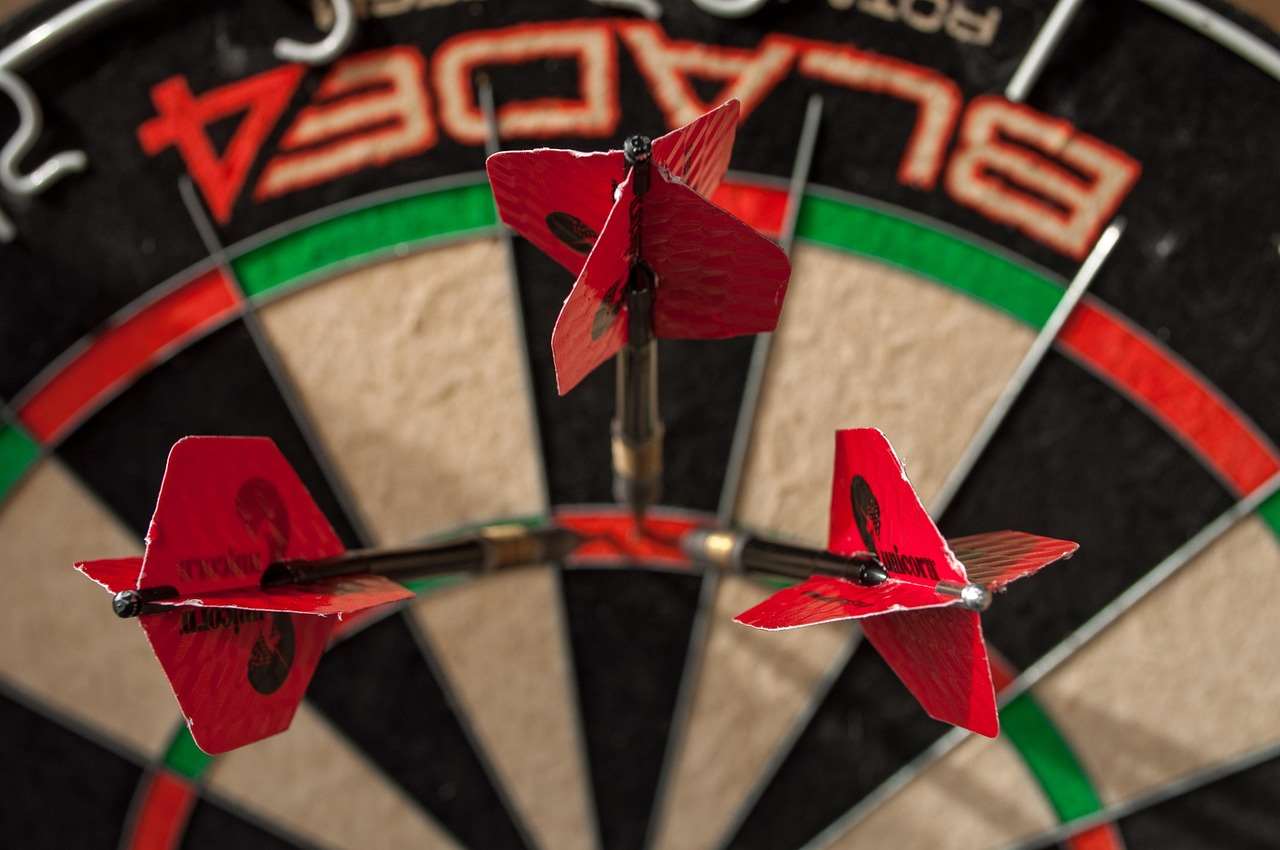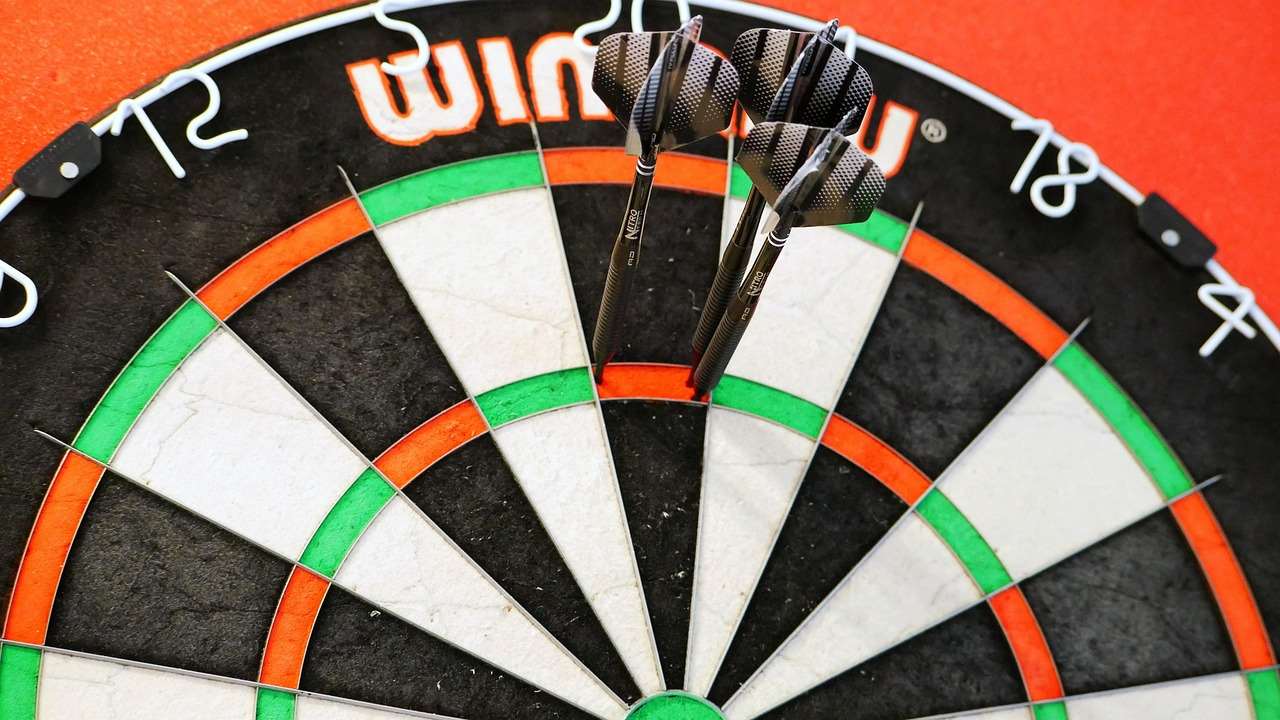Understanding darts zones is fundamental to improving your scoring and strategy; this article will break down each section of the dartboard, explaining its point value, strategic importance, and how to effectively target it. We’ll cover everything from the bullseye to the outer ring, helping you master the art of precision in darts.
⚠️ Still Using Pen & Paper (or a Chalkboard)?! ⚠️
Step into the future! The Dart Counter App handles all the scoring, suggests checkouts, and tracks your stats automatically. It's easier than you think!
Try the Smart Dart Counter App FREE!Ready for an upgrade? Click above!
Understanding the Anatomy of Darts Zones
The standard dartboard, used in games like 501 and cricket, is divided into specific darts zones, each with a different point value. Knowing these darts zones intimately is essential for strategic play and maximizing your score. Let’s break down the major areas:
- The Bullseye: Located at the center, the bullseye is the smallest target but offers the highest reward. It’s comprised of two sections: the outer green ring, worth 25 points (often called the “outer bull”), and the inner red circle, worth 50 points (the “bull”).
- The Numbers Ring: Radiating outward from the bullseye, this ring consists of twenty numbered sections, each worth the value of the number printed on it (1 to 20).
- The Treble Ring: The inner ring, narrower than the other sections, triples the score of the corresponding number. Hitting a treble 20, for example, earns you 60 points, the highest single score possible.
- The Double Ring: Located on the outer edge of the board, this ring doubles the score of the corresponding number. This ring is critical for finishing games, as many rules require you to end on a double.
- The Single Sections: These are the largest areas on the board, representing the plain, non-multiplied value of each number.
- The Outer Ring (AKA the Wire): The thin area around the double ring often called the wire.

Targeting the High-Scoring Darts Zones
While consistency is key in darts, strategic targeting of specific darts zones can significantly boost your score. The most coveted darts zones are, of course, those that yield the highest points. Here’s a guide to prioritizing your targets:
The Treble 20 (T20)
The treble 20 is the holy grail of darts. Landing all three darts in this section in a single turn earns you 180 points, the maximum possible score. It’s a challenging target but worth striving for. Practice throwing consistently at the treble 20 to maximize your scoring potential. Remember that if you’re not hitting the T20 consistently, aiming for the single 20 is a viable option to keep your score progressing.
The Treble 19 (T19)
When you need a slight adjustment or the treble 20 isn’t working, the treble 19 offers a great alternative. While it scores slightly less (57 points), it’s often considered an easier target for some players. Switching to the treble 19 can provide a much-needed confidence boost and keep your scoring on track.
The Bullseye (50)
The bullseye is worth a substantial 50 points and can be useful in certain situations. It’s particularly valuable in games like cricket, where closing out numbers is crucial. However, it’s a smaller target than the treble zones, so assess your accuracy before consistently aiming for it.
Using the Dartboard for Recovery
Sometimes, you need to recover from a bad throw. Understanding the layout of the dartboard can help you minimize the damage. For instance, if you miss the treble 20 to the left, you’ll likely hit the single 1 or the single 5. These are less desirable, but they’re better than hitting the double dart rig. Understanding this proximity can help you adjust your aim on subsequent throws to correct for your tendencies.

Strategic Use of Darts Zones: Setting Up Finishes
A crucial aspect of darts is setting up finishes. This involves strategically reducing your score to a number that can be checked out (finished) in a limited number of darts, usually two or three. Understanding how to use different darts zones to achieve this is vital.
Common Checkout Routes
There are several standard checkout routes that professional players often use. These routes involve targeting specific doubles and singles to bring your score down to zero. Here are a few examples:
- 170 Checkout: T20, T20, Bullseye
- 167 Checkout: T20, T19, Bullseye
- 164 Checkout: T20, T18, Bullseye
- 161 Checkout: T20, T17, Bullseye
- 160 Checkout: T20, T20, D20
Learning these common routes and practicing them regularly will significantly improve your checkout ability. It’s not just about memorizing the combinations, but understanding *why* they work and being able to adapt them based on your throws.
The Importance of Doubles
The double ring is paramount for finishing games. Many variations of darts rules require you to end your score on a double. Mastering the art of hitting doubles is arguably the most crucial skill in darts. Practice targeting different doubles to become proficient in closing out games efficiently.
Consider practicing these doubles: D20, D16, D8, D4, D2 and D1. Also practice D12 and D6. Practice all Doubles so you can close games out efficiently.

Mental Game and Darts Zones
Darts is as much a mental game as it is a physical one. Maintaining focus and composure when targeting specific darts zones is essential for success. Here are some mental strategies to help you excel:
Visualization
Before each throw, visualize the dart hitting the desired darts zone. This mental rehearsal can help improve your accuracy and consistency. Focus on the target and imagine the trajectory of the dart.
Positive Self-Talk
Avoid negative thoughts and self-doubt. Replace them with positive affirmations. Tell yourself you can hit the target, even if you’ve missed it previously. A positive mindset can significantly impact your performance.
Dealing with Pressure
Darts can be a high-pressure game, especially when closing out a leg or match. Learn to manage your nerves and stay calm under pressure. Deep breathing exercises and focusing on your routine can help you maintain composure. You can find a darts point promo code online if you’re looking for new equipment to help you practice.
Analyzing Your Throws
After each throw, take a moment to analyze what happened. Did you release the dart too early or too late? Was your stance correct? Identifying your mistakes and making adjustments can help you improve your accuracy over time. Sometimes this can involve asking for help from people who play more regularly.

Practicing Darts Zones: Drills and Techniques
Consistent practice is the key to mastering darts zones. Here are some effective drills and techniques to improve your accuracy and consistency:
The Round the Clock Drill
Start by aiming at the number 1 and then systematically move around the board, hitting each number in sequence. This drill helps improve your overall accuracy and familiarizes you with the entire board. For added difficulty, try hitting each number with a double or treble.
The Doubles Drill
Focus specifically on hitting doubles. Choose a double (e.g., D20) and throw multiple darts at it until you can consistently hit it. Then, move on to another double. This drill is crucial for improving your finishing ability.
The Treble Drill
Similar to the doubles drill, but focus on hitting trebles. Choose a treble (e.g., T20) and practice hitting it repeatedly. This drill will significantly improve your scoring potential. A good drill would be to hit T20, T19 and T18 repeatedly.
The Checkout Practice
Start with a specific score (e.g., 100) and practice checking it out in as few darts as possible. This drill will help you develop your checkout strategy and improve your ability to finish games efficiently. You can use a Darts scorekeeper app to keep track of your progress.
Consistency is Key
Remember, the most important aspect of practice is consistency. Dedicate time each day or week to practice these drills. Over time, you’ll see significant improvement in your accuracy and consistency. Remember to winmau blade 6 rotate your board to extend the life of your board.

Advanced Strategies: Darts Zones and Opponent Analysis
As you become more experienced, you can start incorporating advanced strategies into your game. One of these strategies involves analyzing your opponent’s tendencies and using that information to your advantage when deciding which darts zones to target.
Identifying Weaknesses
Pay attention to which darts zones your opponent struggles with. If they consistently miss the treble 20, for example, you might want to pressure them by consistently hitting it yourself. This can create psychological pressure and force them to make mistakes. Keep track of when darts when does it finish during the matches and how that may affect your oppponent.
Capitalizing on Strengths
Conversely, if your opponent is particularly strong at hitting a specific darts zone, you might want to avoid leaving them opportunities to score heavily in that area. For example, if they excel at hitting the bullseye, avoid setting up scores that would tempt them to go for it unless you’re confident you can outscore them.
Strategic Blocking
In some situations, it might be advantageous to strategically block your opponent’s preferred darts zones. This can involve aiming at the numbers adjacent to their favorite targets to make it more difficult for them to score effectively. Blocking can disrupt their rhythm and force them to adjust their strategy.
Adapting Your Strategy
Be prepared to adapt your strategy based on how the game is progressing. If your initial plan isn’t working, be willing to change your approach and try something different. Flexibility and adaptability are crucial for success in darts.
Conclusion
Mastering the darts zones is fundamental to becoming a skilled darts player. By understanding the value of each section, strategically targeting high-scoring areas, setting up finishes effectively, and developing a strong mental game, you can significantly improve your performance. Practice consistently, analyze your throws, and adapt your strategy as needed. Now, grab your darts and start honing your skills – the bullseye awaits!
Hi, I’m Dieter, and I created Dartcounter (Dartcounterapp.com). My motivation wasn’t being a darts expert – quite the opposite! When I first started playing, I loved the game but found keeping accurate scores and tracking stats difficult and distracting.
I figured I couldn’t be the only one struggling with this. So, I decided to build a solution: an easy-to-use application that everyone, no matter their experience level, could use to manage scoring effortlessly.
My goal for Dartcounter was simple: let the app handle the numbers – the scoring, the averages, the stats, even checkout suggestions – so players could focus purely on their throw and enjoying the game. It began as a way to solve my own beginner’s problem, and I’m thrilled it has grown into a helpful tool for the wider darts community.